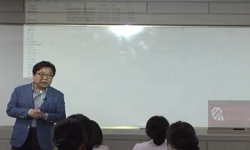Purpose: The main purpose of this study is to develop an evaluation system using the weighted-values of various users and experts for the public space to apply Universal Design, and additionally to find out the commonalities and differences by compari...
http://chineseinput.net/에서 pinyin(병음)방식으로 중국어를 변환할 수 있습니다.
변환된 중국어를 복사하여 사용하시면 됩니다.
- 中文 을 입력하시려면 zhongwen을 입력하시고 space를누르시면됩니다.
- 北京 을 입력하시려면 beijing을 입력하시고 space를 누르시면 됩니다.

공공공간의 유니버설디자인 평가체계 개발 연구 = A Study on the Development of Universal Design Evaluation System in the Public Space
한글로보기https://www.riss.kr/link?id=A107774395
- 저자
- 발행기관
- 학술지명
- 권호사항
-
발행연도
2021
-
작성언어
-
-
주제어
유니버설디자인 ; 공공공간 ; 가중치 값 ; 평가체계 ; Universal Design ; Public Space ; Weighted Value ; Evaluation System
-
등재정보
KCI등재
-
자료형태
학술저널
- 발행기관 URL
-
수록면
25-37(13쪽)
- DOI식별코드
- 제공처
-
0
상세조회 -
0
다운로드
부가정보
다국어 초록 (Multilingual Abstract)
Purpose: The main purpose of this study is to develop an evaluation system using the weighted-values of various users and experts for the public space to apply Universal Design, and additionally to find out the commonalities and differences by comparing the importance of evaluation indicators between users and expert groups. Method: A one-sample t-test was conducted to verify that the components of the public space to universal design application are suitable as evaluation indicators, and AHP(analytic hierarchy process) was performed to derive weight-values for the evaluation system. Results: The importance-values for the total 23 facilities to be used as evaluation indicators were derived by multiplying the weighted-values of each sector, domain, and facility by the disabled, non-disabled, and experts. To summarize the results of overall importance-values derived from the AHP, The disabled showed high-rank weighted-values in facilities of building sector > park & recreation sector > cross domain and low-rank weighted-values for sidewalk and roadway domain. The non-disabled showed high-rank weighted-values in facilities of park & recreation sector > roadway domain > building sector > cross domain and low-rank weighted-values for sidewalk domain. Experts mainly showed high-rank weighted-values in the cross domain and in facilities related to entry and movement to the target space in all sectors and domains. However, it showed moderate importance-values in the sanitary space. The disabled who are restricted to movement have a high demand for universal design in buildings consisting of vertical moving line, and non-disabled people who are not limited to physical movement have a high demand for universal design in parks and recreation sector for increased leisure time. It means that experts are important to recognize the principles of making space because they value cross domain and the key spaces and facilities for suitable the purpose of use. In addition, it can be inferred that non-disabled people have a higher demand for safety than disabled people due to their high importance in roadway domain and facilities of safety and disaster prevention. Implications: The significance of this study is the establishment of a quantitative universal design evaluation system for public spaces considering the different perspectives of the disabled and the non-disabled.
동일학술지(권/호) 다른 논문
-
COVID19 대응을 위한 의료시설의 건축설비 운영방안
- 한국의료복지건축학회
- 강동화
- 2021
- KCI등재
-
- 한국의료복지건축학회
- 최광석 ( Choi Kwangseok )
- 2021
- KCI등재
-
- 한국의료복지건축학회(구 한국의료복지시설학회)
- 최광석 ( Choi Kwangseok )
- 2021
- KCI등재
-
지역사회 통합돌봄을 위한 물리적 인프라의 서비스 취약요소 및 취약지역 진단 연구 - 마포구를 대상으로
- 한국의료복지건축학회(구 한국의료복지시설학회)
- 김현주 ( Kim Hyunju )
- 2021
- KCI등재





 ScienceON
ScienceON KISS
KISS





